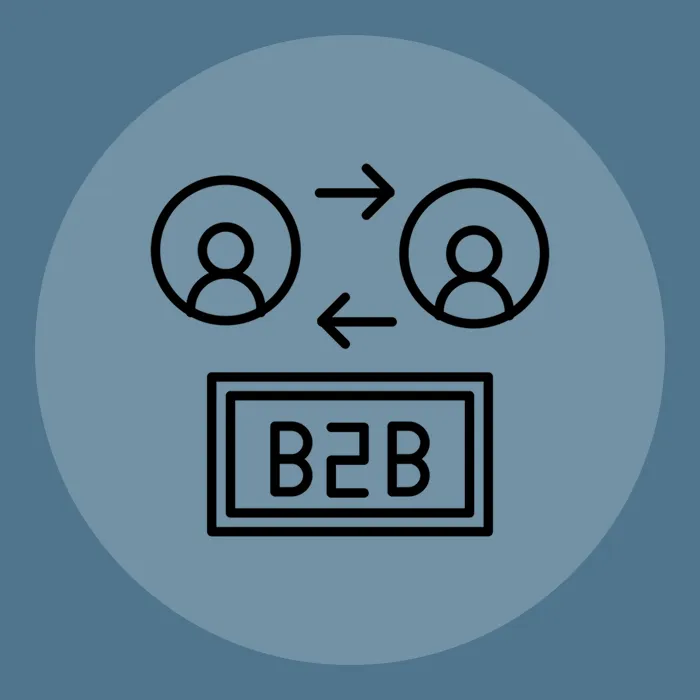Thriving in this era of remote work requires the correct set of tools. It's all about maintaining clear communication, keeping track of tasks, managing payments efficiently and ensuring productive collaborations among your team members.
Fortunately, a range of software options is available to help you do just that. In this comprehensive guide, we will explore some essential types of tools capable of effectively running a thriving remote freelancer team, each offering unique functionalities designed to simplify different aspects of management roles within such setups.
Source:
- Project management solutions
Running a team remotely can be challenging, but the right project management tools make a significant difference. These software solutions help to organize tasks efficiently, keep track of projects’ timelines, and foster effective collaboration among your freelance workers.
Here are some exemplary project management tools:
Asana: This tool shines for task delegation and tracking progress. It boasts an intuitive interface that facilitates easy navigation.
Trello: With its card-based system, Trello simplifies project management in a flexible way. Drag-and-drop functionality enhances convenience while allocating tasks.
Basecamp: An all-in-one solution offering easy task assignments and discussions on work threads. Basecamp also features exceptional file-sharing abilities.
Monday.com: For more complex assignments or larger teams, Monday.com allows multifaceted project planning with color-coding systems for better visualization.
Choosing the right tool depends significantly on your team’s size, the nature of the tasks involved, and personal preferences regarding user interfaces and specific functionalities. As such, it is advisable to give some thought to selecting one that best fits your operations.
Make the most of free trials where available, and also ask your freelancers if they’re already familiar with a particular solution, as this could inform your choice.
- Communication platforms
Effective communication is crucial for coordinating and working efficiently with remote freelancers. Given this, finding an effective communication platform can be a total game-changer.
Here are some top-tier communication tools you might consider:
Slack: A leading choice for many businesses, Slack offers streamlined chat channels and allows seamless file sharing. It also integrates well with other software tools.
Microsoft Teams: If your team frequently works with Office files, Microsoft Teams is ideal due to its seamless integration capabilities. Alongside regular messaging features, it provides video-calling options too.
Discord: Although traditionally used by gamers, Discord’s sophisticated voice chat rooms, complemented by robust text support, deliver a premium live conversation experience.
Zoom: Delivery of HD-quality video meetings is Zoom's mainstay, making this tool ideal for face-to-face chats or presentations within the team.
Incorporating these platforms enables clear and concise conversations among your remote workers, regardless of their physical locations. Highlighting the type of conversations your operation requires most, whether text-based discussions or frequent face-to-face interactions, will help you select the right platform that aligns perfectly with your requirements.
Source:
- Payroll management tools
Ensuring all freelancers are paid accurately and on time is a cornerstone of managing remote teams. Benefit from highly functional payroll management tools that will simplify this process.
Here's a round-up of several advanced options:
OnPay: Known for its wide range of features, OnPay provides payment options, including direct deposit, prepaid debit cards, and paper checks. It also satisfies numerous tax form requirements.
Gusto: Gusto offers full-service payroll in addition to employee benefit management, which means you can access multiple services under one umbrella.
Wave Payroll: This tool caters well to smaller businesses, offering add-on app solutions expressly tailored to expense tracking and invoicing as needed.
QuickBooks Payroll: QuickBooks Payroll is a favorite among many entrepreneurs due to its extensive integration capabilities with QuickBooks' diverse range of financial software solutions.
Warp: Warp is a modern payroll, compliance, and benefits platform that automates state tax compliance, helping businesses save valuable time and reduce costs.
Selecting the appropriate payroll management tool once again involves looking at the size, needs, and growth plans of your team, as well as any ease-of-use preferences. This is also important because ensuring promptness and accuracy while handling freelancer payments not only establishes trust but also promotes an environment conducive to productivity.
- Task assignment software
If you want to become a better manager, then you need to be able to delegate tasks among your remote freelancers easily. In this context, consider incorporating task assignment software. These platforms allow you to hand out responsibilities, monitor progress and handle issues proactively.
Take note of these reputable options:
Toggl Plan: Toggl Plan offers a visual overview of who’s working on what, thanks to its user-friendly drag-and-drop timeline feature.
Jira: Specially suited for developers or teams following agile methodologies. Jira enables intricate task management, including bug tracking and sprint management.
ClickUp: With color-coded categorizations, ClickUp makes it easy to identify the statuses of various tasks at a single glance.
Wrike: Wrike excels in workload management due to robust scheduling features that prevent overloading any particular freelancer with too many assignments.
When selecting the right tool for your team's needs, ensure you understand each platform's functionality and how it fits within your workflow by utilizing demo versions or trial offerings. A well-implemented task assignment software will effectively boost team efficiency while ensuring every member knows exactly what their current priorities are, thus reducing confusion and maximizing productivity.
- Time tracking systems
It is essential to maintain an accurate record of how your freelancers allocate their work hours. It aids in project management and helps ensure that everyone is paid fairly for the time they've dedicated to tasks.
Here are some robust time-tracking software solutions you can use, many of which include employee location tracking features.
Harvest: With Harvest, you'll get time-stamped logs across multiple devices, so it’s excellent for tracking time on various freelance projects.
RescueTime: This tool runs discreetly in the background, providing an insightful look at productivity trends and areas of improvement.
Toggl Track: Togll offers an easy, one-click timer system alongside detailed reports, making it an exemplary option for its simplicity.
Clockify: A free solution with unlimited user support, Clockify offers flexibility while dealing with larger teams.
Hubstaff: Elevate your freelancing with Hubstaff's easy time-tracking software, which provides detailed online timesheets, customizable productivity features, and automated payments.
Selecting a comprehensive yet straightforward tool from this niche will help eliminate any confusion or misuse of company time. Also, providing transparency to your remote team could foster trust by showing them their efforts are acknowledged. In turn, this recognition motivates them to focus all their efforts on completing assignments for your firm.
- Document sharing apps
Effective document sharing is another central tenet of streamlined remote operations, whether it's sharing drafts or getting feedback on presentations. You can deploy document-sharing apps to enable seamless interaction between your freelancers.
Here are some suitable options:
Google Drive: Offering generous storage and easy accessibility from any device, Google Drive supports real-time collaboration on documents, sheets and slides.
Dropbox: Known for its sync feature across devices, Dropbox provides ample space and caters well when bulky files need to be shared.
OneDrive: If your team primarily uses Microsoft Office tools, OneDrive is a great choice due to its perfect integration capability.
Box: For larger teams that require advanced security measures or administrative controls when handling sensitive content, Box can be a valuable solution.
When deciding which platform best fits your workflow requirements, it is essential to recognize that long-term efficiency is directly correlated with the software's user-friendly nature, combined with any customized control features it offers. Once successfully implemented, these powerful tools will significantly enhance the productivity of all those involved in project execution phases by ensuring that every important detail is just a few clicks away.
- File backup and storage
Data protection and recovery planning are top priorities for any business, including those that operate remotely. File backup and storage services allow your team to store, access, and recover important files safely if need be.
Here’s a list of reliable tools:
Carbonite: This is an automatic cloud-based solution that offers multiple versions of files in case you need to restore from different save points.
Backblaze: Considered particularly user-friendly, Backblaze also offers unlimited storage, making it ideal for handling high volumes of data.
iDrive: iDrive offers a versatile solution that performs well on all operating systems and provides continuous backup for updating files in real-time.
Zoolz: Known for its capacity to handle large amounts of data efficiently, Zoolz could be an optimal choice when redundancy features and archiving solutions are top priority.
AWS S3: Amazon Web Services' Simple Storage Service (S3) is desirable, particularly due to its reliable scalability and low-cost storage options. These aspects are especially beneficial when dealing with growing data needs over extended periods.
When selecting these applications, their ease-of-use characteristics must align with high-tech integrations, ensuring that you have access to safety measures that meet the industry's best standards. A wise choice here will result in peace of mind, as you’ll know that critical information remains secure irrespective of any unforeseeable or accidental incidents occurring at the remote workers’ end.
- Video conferencing software
Maintaining human connections in remote work can be difficult. With video conferencing software, however, it's possible to hold team meetings just as if you were face-to-face in the same physical space.
Check out these top options:
Skype: An early market leader, Skype remains reliable, with strong performance even during large group calls.
Google Meet: If your team already uses Google Workspace (formerly G Suite), Google Meet offers native integration, making scheduling and joining conferences effortless.
Webex: This Cisco service offers high-quality video conferencing and advanced collaboration tools, making it a popular choice, particularly for larger businesses.
GoToMeeting: Known for its excellent call quality and the ability to record meetings, GoToMeeting proves helpful, especially during crucial discussions or presentations where referencing back is needed.
BlueJeans: BlueJeans offers Dolby-powered audio for transparent sound, in addition to providing breakout sessions that can be useful when small-group interactions are required within larger virtual gatherings.
Slack Video Call: If your team primarily communicates over Slack, their native video calling functionality can reduce the need to manage additional software while aligning perfectly with existing system setups.
While you’re in the process of selecting video calling platforms, recognize that ease of usage paired with stability ranks way above sophisticated but rarely used functionalities. If you don’t need all the bells and whistles, don’t pay over the odds for them unnecessarily!
- Virtual workspace platforms
A virtual workspace platform can effectively replicate a physical office environment, facilitating improved collaboration and coordination among remote freelancers. Here are some standout choices:
Sococo: Sococo strives to recreate an actual office space where each team member gets a distinct virtual 'room'. The interface shows who is present and available.
Miro: Miro is an online collaborative whiteboard tool ideal for brainstorming sessions, strategy planning or creating flowcharts. Its easy-to-use interface makes it a favorite among creative teams.
Zoho Workplace: An all-in-one platform offering a range of apps, including email service to document creation tools, thereby catering to diverse needs under the same umbrella while the team collaborates & interacts over their specific workspaces.
When evaluating these solutions, prioritizing their adaptability should be a key consideration. You want to be able to set up a system that closely mimics on-site workflows without being beholden to having freelancers visit the office in person. This is different for every business, so don’t rush into picking the first virtual workplace platform you come across.
- Graphic design software
Effective visual communication is a must. This means having access to user-friendly and powerful graphic design software can help your team stand out. It’s also useful when working with third-party design firms.
Take note of these feature-packed options:
Adobe Creative Cloud: Offering everything from Photoshop for image editing to Illustrator for vector-based work, Adobe’s tools are industry-leading solutions.
Canva: With its simple drag-and-drop interface and extensive library of templates, Canva enables non-designers and beginners to create professional-quality graphics quickly.
Sketch: Particularly favored by UI/UX designers, this tool provides reusable components along with a grid system, ensuring consistency, especially when designing interfaces for mobile and web applications.
GIMP: This stands as a robust, free alternative tool that closely matches the capabilities of Photoshop, making it a good choice for firms facing tight budget constraints.
When exploring the perfect fit, ensure the tool aligns well with the proficiency levels that exist among freelancers, and also consider the hardware compatibility aspect.
You don’t want to force teams down a particular avenue only to discover that they are either unfamiliar with the graphic software you recommend or have a workstation at home that doesn’t support it to its fullest.
Conclusion
If you roll out the right mix of these tools, managing a remote team of freelancers will become not only feasible but also very efficient. As part of this, keep in mind that it’s helpful to align your choice of software across your entire team, thus avoiding fragmentation.
Getting everyone on the same platform and providing access to freelancers as required is better than ending up with mission-critical info and project data being siloed.










